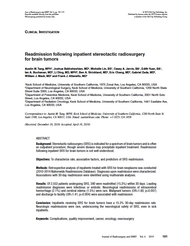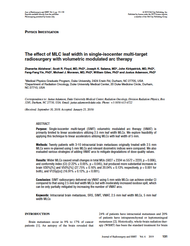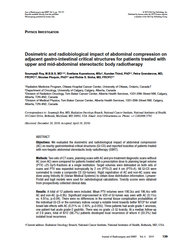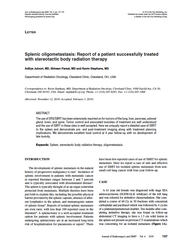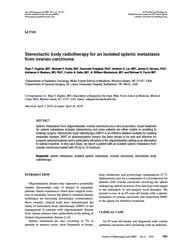- Home
- Journal Contents Downloads
- JRSBRT Downloads
- JRSBRT 6.2, p. 91-100
Product Description
Observation or stereotactic radiosurgery for newly diagnosed vestibular schwannomas: A systematic review and meta-analysis
Janet Leon, Eric J. Lehrer, Jennifer Peterson, Laura Vallow, Henry Ruiz-Garcia, Austin Hadley, Steven Herchko, Larry Lundy, Kaisorn Chaichana, Prasanna Vibhute, Jason P. Sheehan and Daniel M. Trifiletti
Introduction: Vestibular schwannomas (VS) are benign tumors with a slow growth rate. There exists controversy regarding whether patients should receive upfront observation, SRS, FSRT, or surgery at the time of diagnosis. For patients declining resection, this systematic review evaluates the risks and benefits between observation and SRS upon diagnosis of VS.
Methods: Published studies on VS (including acoustic neuromas) were systematically reviewed for clinical series including patients with newly/recently diagnosed unilateral VS. Studies that included patients with previous treatment for the VS or focused on patients with neurofibromatosis (or other genetic conditions) were excluded. Review articles and systematic reviews were excluded but reviewed for relevant references that would otherwise meet search criteria.
Results: Most patients electing observation underwent their first surveillance scan 6 months after initial diagnosis, then annually or every-other-year thereafter. Follow up was similar for patients receiving radiosurgery. The follow-up period varied between studies as not all studies published at a specific time point. Observation alone conferred a radiographic tumor control rate of 65% and serviceable hearing in 71.3% at by the end of the follow-up period in the reviewed studies, and 34% of patients initially opting for observation went on to ultimately elect for treatment. Initial radiosurgery resulted in a tumor control rate of 97% and serviceable hearing rate of 73.8% at by the end of the follow-up period. Radiosurgery resulted in improved tumor control at the end of the follow-up period (p < 0.0001), and serviceable hearing did not statistically differ (p = 0.69). There is an early risk of progressive hearing decline on patients who chose initial observation.
Conclusion: Based on the available published data, observation after initial diagnosis is appropriate for many patients with VS without symptomatic brainstem compression. However, initial observation does risk early progressive hearing dysfunction and patients with serviceable hearing at diagnosis may benefit from early therapy. Long term follow up is critical, and an algorithm to better risk-stratify patients with newly diagnosed VS is underway.
Keywords: Acoustic neuroma, gamma knife, cyberknife, SRS
After payment has been processed for your order of a digital copy (PDF) of this article, you will see a download link on your completed order page and also receive an email containing a download link. The links, which will enable you to download one copy of the article, will expire after 24 hours.
 Loading... Please wait...
Loading... Please wait...




